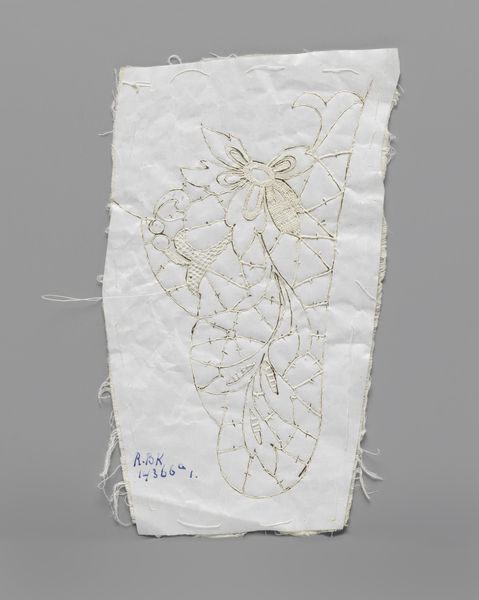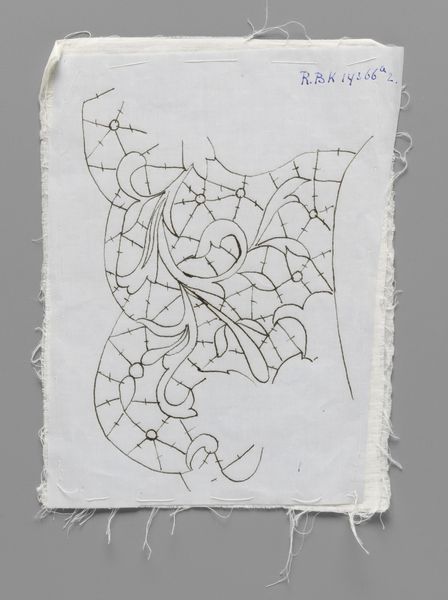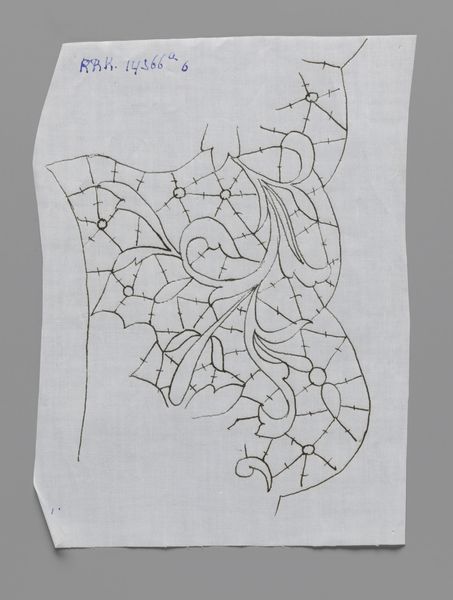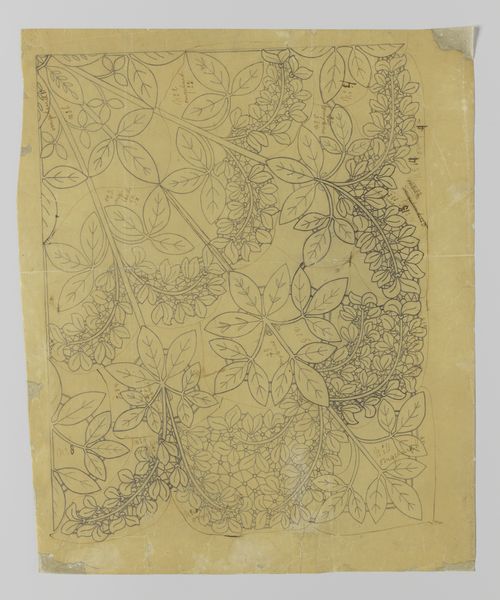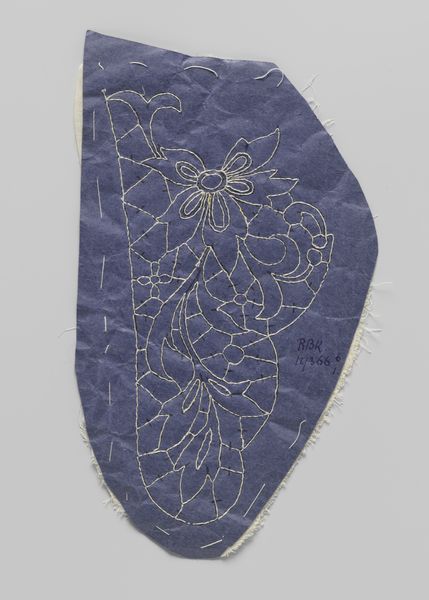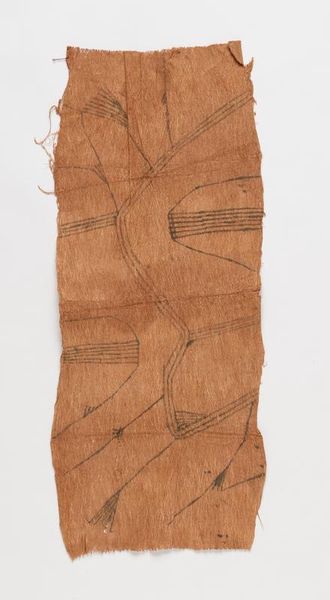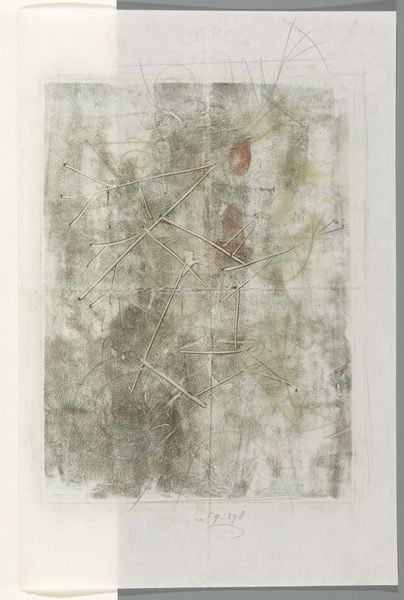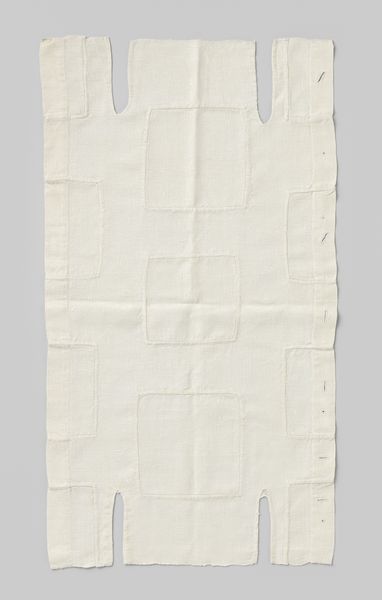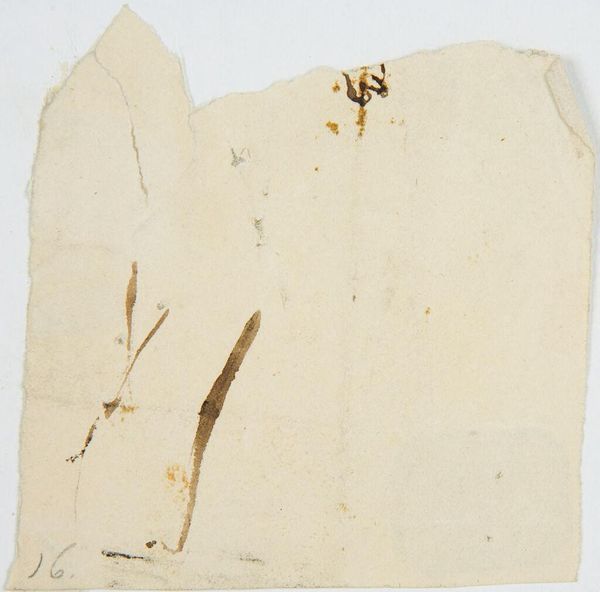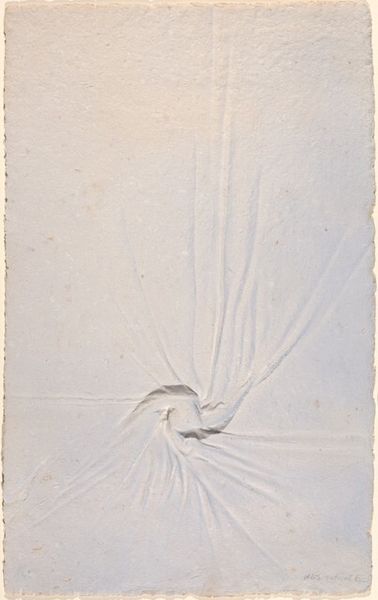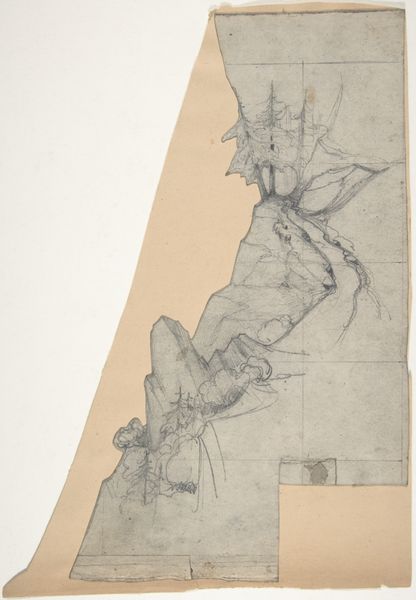
Prikking vastgeregen op een dubbele lap katoen en met traceerdraden voor het maken van een deel van een kraag van naaldkant c. 1915s
0:00
0:00
drawing, mixed-media, ornament, textile, paper, ink
#
drawing
#
mixed-media
#
ornament
#
textile
#
paper
#
ink
#
decorative-art
Dimensions: height 24.5 cm, width 18 cm
Copyright: Rijks Museum: Open Domain
Editor: Here we have "Prikking vastgeregen op een dubbele lap katoen en met traceerdraden voor het maken van een deel van een kraag van naaldkant," created around 1915. It combines drawing, mixed-media, ornament, textile, paper, and ink – quite a combination! The delicate floral design against the grid really catches my eye. What strikes you when you look at this piece? Curator: Well, the beauty of this piece is immediately evident, but what fascinates me is thinking about the labor and social conditions of the time. Given the date, early 20th century, and the use of textiles, we can begin to ask: Who would have been making such lace? What were their lives like? Editor: It does seem like it would take an incredibly long time to make something like that. Do you think the purpose of this specific textile piece offers any clues about this? Curator: Absolutely. The phrase in the artwork’s title that indicates the piece would make "een deel van een kraag van naaldkant" or "part of a needle lace collar" offers an interesting angle. Needle lace, especially in that era, speaks to notions of femininity, domesticity, and even class. Who wore lace collars? What did they signify about the wearer's status or identity? And what does it mean if the people who made these items are completely excluded from the social strata they signal? Editor: That's a powerful way to consider it! So it’s less about the pretty floral design itself and more about the context? Curator: Not *instead* of, but *in addition to.* The aesthetic beauty exists alongside the complex social realities. It forces us to confront potential exploitation, gendered expectations, and the untold stories of the hands that created such intricate work. Editor: I’ll definitely remember to look for those hidden narratives in future artworks too! Thank you for broadening my view! Curator: And thank you for helping me remember the importance of the visual, of pure aesthetic engagement!
Comments
No comments
Be the first to comment and join the conversation on the ultimate creative platform.
